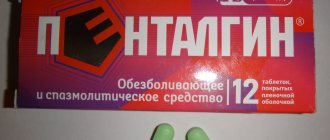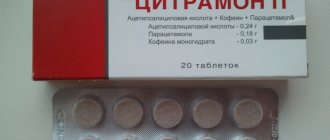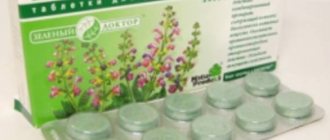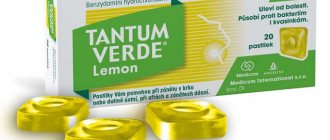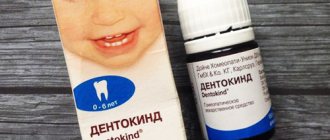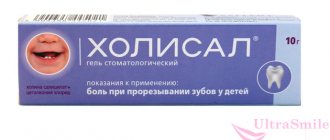Composition and release form
Ketorol is available in two pharmacological forms - tablets and injections.
The active ingredient in its composition is ketorolac. It has a powerful anti-inflammatory effect and is even used to relieve severe toothaches caused by pulpitis or maxillofacial injuries. In addition to the active substance, the tablets contain lactose and starch. For people who are allergic to milk protein, it is better to give preference to the drug in the form of injections. The effect of Ketorol in the fight against pain is often equated to the therapeutic effect of narcotic medications. But adverse reactions from its use are observed much less frequently.
Contents and release format
The main substance in the composition of the drug "Ketonal" is ketoprofen. The drug is classified as a non-steroidal anti-inflammatory drug. This medicine has the ability to block inflammation processes. Thanks to it, pain of various etiologies is relieved. It affects the production of various enzymes, which eliminates the symptoms of local inflammation along with pain. In pharmacies you can find the following forms of release of this medical drug:
- In the form of tablets and capsules.
- In the form of gels and ointments for external use.
- In the format of rectal suppositories.
- In the form of ampoules for injection.
It is important to take into account the type of pain along with its intensity, and, in addition, choose the right version of the drug with the right dosage. For example, when treating diseases of the musculoskeletal system, you can limit yourself to ointments or gels that are applied locally, in places where intense pain is present. For dental pathology, tablet forms are considered the most effective. The healing effect takes the longest to appear after using suppositories, and it is most rapid with injections in the form of a solution.
It should be noted that Ketonal Duo capsules consist of two active components. One part of them is yellow, and the other is white. This is done specifically in order to combine the desired effect of long-term exposure and rapid pain relief. Each option provides a different method for releasing the main active component.
The yellow granules contain components that help the medicine to influence the foci of inflammation for a long time, thereby preventing repeated attacks of pain. And whites are responsible for the onset of instant relief, which occurs ten minutes after taking the pills orally.
Description
Ketorol's active ingredient is ketorolac, a compound that pharmacists classify as a non-steroidal anti-inflammatory drug. As you know, non-steroidal anti-inflammatory drugs (NSAIDs) have three types of action - analgesic, antipyretic and anti-inflammatory.
Ketorolac is, one might say, a “specialist” among NSAIDs, dealing mainly only with counteracting pain. Its antipyretic and anti-inflammatory properties are rather weak. But in terms of analgesic effect, it surpasses all other non-steroidal drugs. Moreover, its action against pain can be compared with the action of recognized leaders among painkillers - drugs that excite opiate receptors of the central nervous system.
At the same time, ketorolac has a number of advantages compared to opiate analgesics. First of all, it does not cause drug dependence. In addition, ketorolac does not have an anxiolytic or sedative effect, does not depress the respiratory center, does not lead to urinary retention, and does not directly affect the cardiovascular system. All this means fewer contraindications and a wide range of application of the drug.
Mechanism of action
The principle of action of ketorolac, like NSAIDs, is based on blocking the biochemical chain consisting in the synthesis of inflammatory mediators - prostaglandins from arachidonic acid using a special enzyme - cyclooxygenase. And pain is usually caused by the effect of prostaglandins on nerve endings.
The analgesic effect of Ketorol occurs primarily in peripheral tissues. Ketorolac does not have a selective effect on cyclooxygenase; it blocks cyclooxygenase types 1 and 2 equally effectively. The drug's non-selectivity, however, means that it also reduces the amount of prostaglandins that protect the gastrointestinal tract and prostaglandins responsible for platelet aggregation. And this is fraught with side effects, especially with long-term use of the drug.
Painkiller Ketonal
Ketonal is one of the powerful medications that can eliminate painful sensations of any origin. This remedy instantly combats pain in teeth and gums, has a strong analgesic effect and can stop the process of inflammation.
Composition and features of the drug
The main active ingredient of the painkiller is ketoprofen. The medicine belongs to the group of non-steroidal drugs that have an anti-inflammatory effect. The main substance can eliminate pain of various origins, namely dental pain. Ketoprofen is able to block the development of inflammation and the production of various enzymes that cause pain in the teeth. The list of symptoms for which the medication is used is quite wide.
The drug is prescribed in the following situations:
- postoperative period (tooth extraction, implantation);
- inflammation of the oral mucosa, all forms of stomatitis with a pronounced painful syndrome;
- acute symptoms of periostitis and pulpitis;
- pathological condition of bone tissue.
Release forms and methods of application
Manufacturers produce the medicine in the form of:
- coated tablets or capsules;
- gel or ointments;
- candles;
- injection solution.
These forms contain one active component (ketoprofen) with different dosages. For tooth pain, medication is prescribed in tablets or capsules.
The drug is produced in three forms:
- Ketonal;
- Ketonal Uno;
- Ketonal Duo.
Ketonal Duo and Uno are the newest form of long-acting and fast-acting medicine. The tablets take effect within 5-10 minutes. This form of the drug is quickly absorbed into the gastrointestinal tract, excreted through the kidneys, and only a small part through the intestines.
The drug is taken on the recommendation of a specialist or in accordance with the attached instructions.
Capsules and tablets are recommended to be taken during or after meals with water or milk. The maximum permissible daily dose of the active ingredient cannot exceed 200 mg, therefore, the dosage of the analgesic depends on this. The tablet form contains 100 mg - you can take it twice a day, and Ketonal Duo (150 mg) and Uno (200 mg) capsules - once a day;
The injection solution is administered only under the supervision of a specialist;
The gel or ointment is applied to the painful area in a thin layer and rubbed into the skin with massage circular movements. Duration of administration 2 times a day for two weeks.
Which type of analgesic to choose depends entirely on the severity of dental pain. If it is not possible to see a dentist and the pain is very severe, you need to take Ketonal Duo. It has the strongest and most prolonged effect in comparison with the conventional form of the medicine.
Ketonal Duo consists of two types of granules:
- white (60%) – the active substance is released instantly, the result occurs 15 minutes after administration;
- yellow – long-term pain relief, excluding repeated use of the drug.
Contraindications and side effects
The analgesic has a powerful effect and instantly eliminates intense pain. But you should not take the drug for a long time due to the high risk of harm to health. Long-term use of Ketonal can cause gastrointestinal diseases.
Despite the positive effect, the drug for toothache should be taken with extreme caution. It has various contraindications and negative effects.
Ketonal is prohibited from taking for such pathologies and diseases as:
- hypersensitivity or allergy to a component;
- gastrointestinal diseases;
- renal failure;
- problems with blood clotting;
- children under 14 years of age;
- during pregnancy and breastfeeding;
- late gestation.
The medication should be taken with extreme caution if you have the following diseases:
- alcohol addiction;
- cirrhosis of the liver;
- diabetes mellitus of any type;
- stomatitis;
- pathologies of the cardiovascular system;
- anemia of all degrees.
It is not recommended to take Ketonal before visiting the dentist. The drug has a negative effect on anesthesia.
For older people, specialists prescribe this drug after a thorough diagnosis of their health condition.
Despite the fact that the medicine copes well with toothache, it is worth remembering that it has the following side effects:
- pain in the abdominal area;
- heart rhythm disturbance;
- diarrhea;
- vomiting and nausea;
- severe migraines;
- sleep, speech or vision problems;
- anemia;
- allergic reaction (urticaria, rash, vascular edema) and others.
Long-term use of the medicine has an adverse effect on the body - the dosage should be strictly observed.
If the norm is exceeded, symptoms of overdose may appear:
- nausea and vomiting;
- abdominal pain;
- confusion;
- irregular breathing;
- renal dysfunction.
In case of an overdose of an analgesic, you should urgently rinse your stomach and drink sorbents: Polysorb, Enerosgel. The harmfulness of the drug is associated with a considerable list of contraindications and warnings. Therefore, before starting therapy, you should carefully think about the dangers of taking Ketonal and seek help from a specialist.
Interaction with other drugs
When taking a painkiller, you should be aware of its interaction with other pharmaceuticals.
The drug interacts as follows:
- reduces the effect of diuretic and antihypertensive drugs;
- enhances the effects of oral medications for hypoglycemia and seizures;
- causes gastrointestinal bleeding when taken together with ethanol, corticosteroids,
- thrombolytics and antiplatelet agents;
- provokes renal failure when combined with diuretics;
- reduces the effect of mifepristone.
Gel composition
Ketorol gel is a homogeneous composition that can be visually transparent or translucent. The drug has a characteristic odor, which is determined by the presence of the substance ketorolac in an amount of 20 mg/1g. Auxiliary components and substances included in Ketorol ointment:
- propylene glycol;
- dimethyl sulfoxide;
- carbomer;
- sodium compounds;
- tromethamine;
- purified water (without impurities);
- flavoring (natural origin);
- oil obtained from castor bean seeds;
- alcohol (ethanol);
- glycerol
Therapeutic effect
Ketorol can only relieve the symptoms of dental diseases, but not treat them. It is only suitable for temporary relief when it is not possible to urgently consult a doctor. Patients who took potent medications for a long time and did not turn to specialists ended up completely losing problem units without the possibility of restoring them using conservative methods.
Ketorol does not cause addiction in the body, unlike other NSAID drugs, but this does not mean that you can exceed its dosage established in the instructions.
It is not advisable to take Ketorol tablets on your own without first consulting a doctor. Any medication can cause unpredictable reactions from the body. This is especially true for people with severe chronic diseases.
Contraindications
This painkiller is taken during or immediately after meals with plenty of water.
If the active substance of the drug, ketoprofen, irritates the gastric mucosa, it is allowed to drink the drug with milk.
Attention! The recommended dosage depends on the severity of pain, but it is unacceptable to exceed 200 mg per day.
Ketonal tablets are available in dosages of 50, 100, 150 and 200 mg.
Take the drug for no longer than 3 days, because With longer use, side effects may occur.
It must be borne in mind that Ketonal is incompatible with many other drugs.
It cannot be taken simultaneously with thrombolytics and antiplatelet agents, and in combination with diuretics, hypothetical drugs and mifepristone, Ketonal significantly reduces their effect.
When used simultaneously with anticonvulsants and antihypoglycemia drugs, a high accumulation of the latter in the blood occurs.
The active substance is ketoprofen. Auxiliary ingredients: lactose, magnesium stearate, colloidal silicon dioxide.
Photo 1. The drug Ketonal is produced by Sandoz in the form of capsules, dosage 50 mg, has an anti-inflammatory effect.
The drug is used as an analgesic, anti-inflammatory and antipyretic agent for inflammatory and degenerative diseases of the musculoskeletal system, pain syndromes, including mild, moderate and severe syndromes.
Ketonal is taken orally, swallowed whole during or after meals, washed down with water or milk. The volume of liquid must exceed 100 ml.
100 mg tablets are usually taken one twice a day. Extended-release tablets 150 mg - one piece once a day.
The drug relieves discomfort quite quickly - within 10 - 15 minutes, depending on the dosage and intensity of pain.
The effect lasts for 6 - 8 hours when taking regular tablets. Ketonal Duo and Ketonal Uno have a prolonged effect, their effect lasts up to 12 hours.
There are several prohibitions on taking the drug Ketorol. Among them are:
- pregnancy at any stage;
- breastfeeding (the active substance is absorbed into breast milk and enters the baby’s intestines);
- children under 16 years of age;
- severe renal or liver failure;
- allergy to auxiliary and active substances of the medication;
- diseases of the digestive tract that occur in acute form (gastritis, duodenal ulcer).
The instructions for use list in detail all diseases for which taking the medication is contraindicated. If you notice any side effects from treatment, you should immediately stop taking the medication and consult a doctor. Ketorol has analogues in terms of therapeutic action and duration of analgesic effect.
Ketonal Duo and Ketonal Uno are also strong pain relievers. The dosage in Duo is 150 mg of active ingredient. Therefore, it is permissible to take only one capsule per day.
Ketonal Duo is distinguished by its rapid onset of analgesic effect and long-lasting action, and also by the fact that the capsules have a modified release function and are divided into two separate halves with ketoprofen.
The white half is designed to provide immediate assistance in alleviating pain. Thanks to her, the pain disappears after 15 minutes. The yellow half acts slowly and is designed to last for a long time.
Thanks to it, the patient does not feel pain for 12 hours. The drug begins to affect inflammatory processes 1 - 2 hours after administration.
When using the drug in the form of suppositories, the effect of the pain reliever will take longer to manifest itself than when taking tablets or injections.
We suggest you read: Toothache and headache at the same time: causes, how to treat
Candles are placed after bowel movements and hygienic procedures. After installing the candle, you need to rest for 20-30 minutes in a lying position.
Important! Take the drug only if absolutely necessary. For mild pain, it is better to use a weaker remedy. In any case, if you experience pain, you should consult a doctor so that he can eliminate the real cause of the pain.
For injection, use a Ketonal solution at the rate of 50 mg of the active component ketoprofen in one ampoule. Single dose - 100 mg solution.
When administered intramuscularly, it is recommended to use those areas of the body in which the muscles are located under the skin - the upper area of the shoulder or thigh.
The buttock area is less preferable because it has a fatty layer under the skin. A solution injected into the fat layer will not provide the proper analgesic effect.
Intramuscular injections are allowed both in a hospital setting and at home. It is enough to master the necessary injection technique.
Intravenous administration of Ketonal is possible only through a dropper.
As a rule, Ketonal injections are prescribed if a surgical analgesic result is needed, but oral administration of tablets or capsules is not possible.
Ketonal is well tolerated by pregnant women and is approved for use in the second trimester. When breastfeeding, taking the drug is not advisable.
Long-term use of the drug can cause disturbances in the gastrointestinal tract, liver and kidneys.
Before using the medicine, it is recommended to familiarize yourself with the contraindications:
- colitis;
- ulcers;
- bronchial asthma;
- diabetes;
- alcoholism;
- hypertension;
- anemia;
- kidney diseases.
You should not take Ketonal in combination with other types of medications.
Good reviews and effectiveness of Ketonal in relieving toothache does not mean its therapeutic effect.
As soon as the level of ketoprofen in the body decreases, the painful symptoms will return with the same intensity.
Therefore, there is no need to delay your visit to the dentist to determine the cause of the pain and eliminate it once and for all.
Treatment products musculoskeletal system Lek Ketonal DUO
----------------------Hello!------------------------
Today I want to share with you my impressions of Ketonal Duo analgesic and anti-inflammatory tablets. I purchased the tablets on the advice of a pharmacist for pain relief when I began to experience an inflammatory process due to a wisdom tooth. That is, I took them for a toothache, and even the pills couldn’t cope with that, which I’ll tell you about in more detail.
Ketonal Duo
Ketonal Duo were purchased at the nearest pharmacy, the cost of the tablets was 250 rubles. The package contains 30 capsules.
Indications for use of Ketonal Duo.
inflammatory and degenerative diseases of the musculoskeletal system: rheumatoid arthritis; seronegative arthritis - ankylosing spondylitis (Bechterew's disease), psoriatic arthritis, reactive arthritis (Reiter's syndrome); gout, pseudogout; osteoarthritis;
pain syndrome: headache; tendonitis, bursitis, myalgia, neuralgia, radiculitis; post-traumatic and postoperative pain syndrome; pain syndrome in cancer; algodismenorrhea.
It follows that it is recommended to take Ketonal Duo for pain.
Ketonal Duo
Dosage and methods of application.
The standard dose of Ketonal DUO for adults and children over 15 years of age is 150 mg/day (1 modified-release capsule). Capsules should be taken during or after meals with water or milk (the volume of liquid must be at least 100 ml).
The maximum dose of ketoprofen is 200 mg/day.
That is, it turns out that you can take no more than one tablet per day, otherwise side effects will appear, but they are not weak, see for yourself.
Ketonal Duo
Side effects of Ketonal Duo.
Allergic reactions: skin reactions; rhinitis, shortness of breath, bronchospasm, angioedema, anaphylactoid reactions.
Digestive system: dyspepsia, abdominal pain, stomatitis, dry mouth; ulceration of the gastrointestinal mucosa, impaired liver function; perforation of the gastrointestinal tract, exacerbation of Crohn's disease, melena, gastrointestinal bleeding.
CNS: headache, dizziness, sleep disturbance, fatigue, nervousness, nightmares; migraine, peripheral polyneuropathy; hallucinations, disorientation and speech disorder.
Sense organs: tinnitus, change in taste, blurred vision, conjunctivitis.
CVS: tachycardia, arterial hypertension, peripheral edema.
Urinary system: renal dysfunction, interstitial nephritis, nephrotic syndrome, hematuria.
Other: hemoptysis, menometrorrhagia
Ketonal Duo
Now let's move on to the main thing, my experience of taking Ketonal Duo tablets.
As I already wrote above, I took Ketonal Duo tablets for toothache, I took the first tablet closer to 10 pm. Initially, I naturally hoped that the pills would help me, but after an hour there was no result, the pain did not go away. I went online and started reading, and it turned out that they take a very long time to dissolve in the body and do not begin to act immediately. This reassured me a little, I decided to wait a little longer, it was 12 at night, the pain was not going away, the tooth hurt terribly. I endured my grief until 3 am and decided to take another Ketonal Duo tablet (let me remind you that the single dose is 1 tablet per day, I’m already taking a double dose). As a result, I was able to fall asleep only at 6 am! So much for the analgesic effect, from 10 o’clock in the evening they only took effect by 6 am, and then in a double dose (although no more than one dose is prescribed)! Although, to be honest, I’m generally inclined to think that the pills had nothing to do with it, and the pain subsided on its own.
I don’t recommend Ketonal Duo, at least they are useless for toothache! Thank you all for your attention!
General information about the drug
Ketorol is an anesthetic that has an anti-inflammatory and moderate antipyretic effect on the body. The active substances of the drug block the transmission of nerve impulses to the brain, thereby freeing a person from suffering. Pain signals do not reach the brain, and it does not inform the patient about the presence of pain in the body.
Does ketorol help with toothache? This drug is prescribed to patients in the postoperative period; today it is one of the strong painkillers available to people at an inexpensive price. The medicine is sold without a prescription and is available in every pharmacy. Read the instructions carefully before use.
The drug does not cause adverse side effects like drugs and is completely safe. It does not increase blood pressure, does not interfere with urinary functions, does not depress the respiratory process, does not weaken the functionality of the intestines and does not affect the nerves.
The active medicinal substance in the drug is ketorolac, which has a pronounced analgesic effect. The composition also includes lactose. However, the disappearance of pain does not mean healing from the disease: the patient should immediately make an appointment with a dentist. Severe pain indicates pathological changes in bone/gingival tissue and requires immediate treatment.
If the patient does not respond to changes in health, pathological processes in the tissues will eventually lead to the destruction and loss of the diseased tooth. The disappearance of pain impulses does not indicate healing of the disease.
The drug is not classified as a narcotic and does not cause addiction; there are also no side effects noted after using the drug. However, it is not recommended to abuse the drug, as well as to combine it with analgesics. Before use, discuss all the details with your doctor.
Indications for use
Not every case of toothache (dentalgia) requires the use of ketonal.
Attacks of acute pain during caries occur in response to exposure to sweet, cold or hot foods and can spontaneously stop when the irritant is removed.
In such cases, the use of ketonal is considered an excessive measure.
Indications for taking ketonal for dentalgia are:
- Pulpitis is an inflammation of the pulp, soft tissue located in the bone cavity of the tooth. The pain is paroxysmal, responding in the temple and ear. It occurs mainly in the evening and at night; it can appear during the day when biting on the affected tooth.
- Periodontitis is an inflammatory process that spreads to the membrane of the tooth root and adjacent tissues, making it seem mobile and seem to rise above the rest. Accompanied by clearly localized intense pulsating, practically unabating pain that appears at the slightest touch to the tooth.
- Periostitis (flux) is an inflammation of the periosteum, a consequence of untreated two previous problems (periodontitis and pulpitis).
- Tooth trauma and postoperative pain (due to extraction).
Read also: Ketanov helps with toothache
The use of ketonal for acute dentalgia is justified by its action in two directions: the elimination of pain and the reduction of inflammation, which is its cause.
Operating principle
The main component of Ketorol has the ability to be absorbed from the intestines into the blood. It quickly penetrates the internal organs and tissues, thereby providing a rapid therapeutic effect. Ketorolac (active ingredient) has the ability to suppress the activity of enzymes that cause the production of prostaglandins. The substances are responsible for the susceptibility of pain, the development of the inflammatory process and an increase in body temperature.
Not all prostaglandins affect the development of the inflammatory process; some of them are necessary to protect the mucous membranes of the stomach from external irritants. 1st generation NSAIDs, which include Ketorol, block all types of hormones, therefore, with long-term use, an exacerbation of gastrointestinal diseases is possible.
Description of the drug Ketonal
Ketonal is a powerful anti-inflammatory non-steroidal drug.
Active substance – Ketoprofen. It is mainly prescribed for the treatment of diseases of the musculoskeletal system. Manufacturers position it as a remedy that can relieve inflammation and pain of various origins. Ketonal is famous for its analgesic properties, but it is also an excellent anti-inflammatory and antipyretic drug. The medication helps get rid of moderate to severe toothache and can stop the development of inflammatory processes in the body. Read also: What can you drink for a toothache?
The drug is sold in 3 types:
Ketonal Duo and Uno are a new form of the drug, which differs only in the way Ketoprofen is released, providing a quick action of the painkiller. The drug is absorbed at a good rate in the intestines and into the walls of the stomach, and is excreted through the kidneys, and very little through the intestines.
How to take it correctly and in what dosage?
To find out whether Ketonal helps or not with toothache, you should study the instructions.
- The drug should only be administered subcutaneously or intravenously by a healthcare professional. To do this, use sterile material and instruments.
- The cream or gel should be applied to the affected area with massaging movements in a thin layer. It is not recommended to use the ointment more than 2 times a day. Treatment of bruises and sprains must be carried out within two weeks.
- It is recommended to take capsules and tablets with meals, but with plenty of liquid (water or milk).
We invite you to read: How and how to treat periodontal disease
The maximum permitted daily dosage is 200 mg. This means that the tablets are indicated to be taken twice a day, and the Ketonal Duo and Uno capsules only once a day, since each of them contains the daily volume.
Sometimes situations arise when the patient, doubting whether the prescribed remedy will help, and not knowing how long the drug works, independently exceeds the maximum threshold. The consequence of this step is the occurrence of unpleasant symptoms:
- nausea;
- vomiting;
- change in breathing rhythm;
- dyspeptic disorders;
- pain in the epigastric region;
- coordination problems;
- confusion.
In cases of overdose, symptomatic therapy is prescribed, gastric lavage and drinking plenty of fluids are indicated.
If necessary, ketans can be taken again. You can use a maximum of 5 Ketanov tablets per day. Most often, the medicine is used 1-2 tablets per day (the most effective is taken on an empty stomach), washed down with the required amount of water. You can eat food 20-30 minutes after taking the tablet.
You cannot use Ketanov tablets for more than a week. If long-term use of ketans is necessary, replace them with another non-steroidal anti-inflammatory drug.
Ketanov is often prescribed after tooth extraction. However, you should not use the medicine for more than one day.
Ketanov helps a lot and is used for the following types of toothache:
- inflammation of the nerve (pulpitis) or root;
- caries;
- dentitis;
- flux or internal suppuration;
- periodontal disease.
What medications are there for toothache?
You can achieve an analgesic effect much faster if you combine tablet medications with local remedies. The simplest of them, which can be considered popular and very inexpensive, is rinsing your mouth several times a day with a salt solution. Sodium draws water out of the tissue, so hypertonic saline helps reduce swelling, reduce pressure on the nerve, and reduce pain. But there are other local drugs that act either directly on the receptors or have an antimicrobial effect.
Lidocaine
Rating: 4.9
Everyone knows the magical effect of local anesthetics. If you hurt your finger, then you should spray a solution of novocaine or lidocaine on it, then the finger seems to freeze, and the pain disappears completely. You can do the same with a bad tooth. The only condition under which Lidocaine can help is the presence of a cavity in the tooth so that Lidocaine reaches the nerve endings and soft tissue receptors.
To do this, you need to moisten a gauze turunda with a solution of 2% lidocaine and carefully place it in the tooth cavity. For this purpose, it is not recommended to take cotton balls, since the cotton ball is sometimes difficult to remove and partially remains in the tooth cavity. To do this, you can successfully use Lidocaine, which is sold in ampoules at a concentration of 2%. Its cost is only 40 rubles. for a package of 10 ampoules, and Lidocaine is produced by the domestic company Grotex.
Toothache causes severe discomfort to a person. By choosing the right therapy, you can feel relief. Drugs for toothache can be divided depending on the principle of suppressing painful sensations.
The following types are divided:
- painkillers - a group of analgesics (Analgin, Pentalgin, Aspirin, Paracetamol, No-shpa);
- anti-inflammatory drugs with the active ingredient ibufen (Ibuprofen, Nurofen, Nimesil, Nise);
- freezing - anesthetic drugs (lidocoine-containing gel Kamistad, Kalgel, Baby-Dent, Solcoseri);
- antibacterial agents (Siflox, Nolitsin, Metrogyl).
Each person has a different pain threshold, so the selection of medications is carried out individually.
Ketonal, especially Duo and Uno capsules, is a powerful analgesic that relieves severe toothache in a fairly short period of time. But this painkiller is not always worth using. Minor pain from caries can be eliminated by rinsing or folk remedies.
In extreme situations, with very acute pain, when only a qualified specialist can completely eliminate dental disease, taking Duo and Uno capsules is appropriate.
It is worth remembering that when taking an analgesic, the pain is relieved temporarily, but the tooth is not treated. Medicine relieves only the symptoms of diseases, but does not eliminate the causes and consequences themselves.
Side effects
Often - more than 3%, less often - 1-3%, rarely - less than 1%.
From the digestive system: often - gastralgia, diarrhea; less often - stomatitis, flatulence, constipation, vomiting, feeling of fullness in the stomach; rarely - loss of appetite, nausea, erosive and ulcerative lesions of the gastrointestinal tract (including with perforation and/or bleeding - abdominal pain, spasm or burning in the epigastric region, blood in the stool or melena, vomiting with blood or coffee type thick", nausea, heartburn, etc.), cholestatic jaundice, hepatitis, hepatomegaly, acute pancreatitis.
From the urinary system: rarely - acute renal failure, lower back pain, hematuria, azotemia, hemolytic-uremic syndrome (hemolytic anemia, renal failure, thrombocytopenia, purpura), increased urination, increased or decreased urine volume, nephritis, edema of renal origin.
From the senses: rarely - hearing loss, ringing in the ears, visual impairment (including blurred visual perception).
From the respiratory system: rarely - bronchospasm or shortness of breath, rhinitis, pulmonary edema, laryngeal edema (shortness of breath, difficulty breathing).
From the side of the central nervous system: often - headache, dizziness, drowsiness; rarely - aseptic meningitis (fever, severe headache, convulsions, stiffness of the neck and/or back muscles), hyperactivity (mood changes, anxiety), hallucinations, depression, psychosis, fainting.
From the cardiovascular system: less often - increased blood pressure.
We suggest you read: If antibiotics do not help with pneumonia
From the hematopoietic organs: rarely - anemia, eosinophilia, leukopenia.
From the hemostasis system: rarely - bleeding from a postoperative wound, nosebleeds, rectal bleeding.
From the skin: less often - skin rash (including maculopapular rash), purpura, rarely - exfoliative dermatitis (fever with or without chills, flushing, thickening or peeling of the skin, enlargement and/or tenderness of the tonsils), urticaria, malignant exudative erythema (Stevens-Johnson syndrome), toxic epidermal necrolysis (Lyell's syndrome).
Local reactions: less often - burning or pain at the injection site.
Allergic reactions: rarely - anaphylaxis or anaphylactoid reactions (change in facial skin color, skin rash, urticaria, itching of the skin, tachypnea or shortness of breath, swelling of the eyelids, periorbital edema, shortness of breath, difficulty breathing, heaviness in the chest, wheezing).
The most common consequences after treatment with Ketorol are disruption of the gastrointestinal tract. It is manifested by flatulence, a feeling of heaviness in the stomach and diarrhea. Typically, such manifestations occur in people over 65 years of age, since they are often diagnosed with chronic diseases of the gastrointestinal tract.
Other possible side effects from taking Ketorol include:
- excessive sweating;
- allergic reactions, manifested by skin rashes and difficulty breathing;
- swelling and redness of the face;
- dizziness;
- headache.
The likelihood of adverse reactions occurring depends on the dosage of the drug taken and the time for which it is taken. When overdosing on painkillers, people experience symptoms of intoxication:
- vomit;
- nausea;
- dehydration.
If these signs appear, you must rinse your stomach with water and take the sorbent. After this, Ketorol is stopped until you feel better.
Dosage
The principles of using tablets and injection solutions are different.
Pills
One tablet contains 10 mg of ketorolac tromethamine, and the daily dose is no more than 40 mg. Taking tablets more than once every 6 hours is not recommended, so as not to provoke an excess dosage. Dentists recommend limiting yourself to the minimum effective dose whenever possible.
It is recommended to take the tablet after meals with warm water. After administration, the drug enters the stomach, and the effect begins to be felt after 30-40 minutes. Maximum pain relief occurs within 1.5 hours. The effect lasts 4-8 hours.
The duration of the course of taking Ketorol should not exceed 5 days.
For toothache, a tablet form of this remedy is usually recommended. The solution may be needed in cases where it is difficult for a person to swallow a tablet, or the pain syndrome needs to be quickly reduced, and the pharmacy only has a solution for injections.
Ketorol injection solutions can be used in three forms:
- intramuscularly;
- intravenously;
- parenterally.
With intramuscular administration of Ketorol, the analgesic effect appears within 30-35 minutes, reaching a maximum by 1 hour. The minimum effective dose is used, and a maximum of 2 ml of solution can be administered in one administration for patients weighing more than 50 kg. The injection is given deep into the muscle, slowly. The permissible maximum per day is 4 ampoules.
With intravenous use of Ketorol, toothache disappears faster - after 20-30 minutes. A single dose is 1 ampoule, and the daily dose should not exceed 90 mg. It is recommended to administer the drug no faster than 15 seconds.
Intramuscular or intravenous injections can be given for no longer than two days.
If you first used tablets and then switched to injections, the daily dose should not exceed 90 mg, and for people over 65 years old - 60 ml.
In rare cases, you have to take Ketorol solution orally. To do this, the contents of the ampoule are diluted in 100 ml of warm (not hot!) water and drunk. With this method, toothache begins to subside after approximately 35-40 minutes.
It is important to adhere to the correct amount and frequency of taking the drug to prevent side effects. So, the recommended dose will depend on the intensity of pain. The maximum amount of active substance should not exceed 200 mg in any form.
In tablets, the available dosage is limited to 50 mg, 100 mg and 200 mg of ketoprofen; in ampoules you can find a solution of 50 mg, which is more convenient for adjusting the required dose. If you take Duo or Uno capsules, then you cannot take more than one of them per day, since the amount of active substance in them is increased compared to a regular tablet.
How long does it take for it to start working? If these were injections or improved capsules, then significant relief is felt within 10-15 minutes after administration of the product. The effect of rectal suppositories may occur later. But a lot depends on the individual characteristics of the body.
Release form
The manufacturer of this product is the Indian company Dr. Reddy's Laboratories Ltd. The drug belongs to the painkillers group of non-steroidal anti-inflammatory drugs.
It comes in three forms:
- The tablets are round, biconvex, green, the inner contents are white. On one side you can see the Latin letter S. The cardboard box contains two blisters, each containing 10 tablets. To combat toothache, you can purchase only one blister, which will be much cheaper.
- Injection solution – a clear or yellowish liquid in 1 ml ampoules. The box contains 10 ampoules; some pharmacies sell ampoules individually.
- Gel is a transparent mass with a fresh, specific odor. The box contains a metal tube containing 30 g of a substance with a concentration of 2%. Absorbs quickly upon application.
Only Ketorol tablets and injections help with toothache, and the gel is not suitable for this, since it is intended exclusively for external use. When applied to or near mucous membranes, it causes irritation.
Indications for use for toothache
Ketorol is taken for toothaches manifested due to:
- medium form of caries;
- pulpitis;
- dental granulomas;
- osteomyelitis;
- maxillofacial injuries;
- cysts;
- flux;
- tooth extraction;
- pericoronitis,
- implantation or other surgical intervention.
Taking Ketorol in tablets or ampoules for more than 5 days is not recommended.
Pills
Indications
This medicine is universal in the sense that it affects pain in various locations. Its effectiveness has been proven in the following cases: “Ketonal” helps with toothache, migraine, against the background of otitis media, neuralgia, intestinal colic and gout. Among other things, this medicine is advisable to use in the following cases:
In addition to relieving pain, this medicine partially eliminates inflammatory processes, relieving swelling of soft tissues.
Composition of Ketorol and its effect
The principle of action of Ketorol is based on the ability of its main component - ketorolac - to suppress the synthesis of prostaglandins and thereby have an anti-inflammatory effect. Prostaglandins in the body act as initiators of inflammation and pain in areas of tissue damage, suppuration and other pathological processes.
This is exactly how Ketorol helps with toothache: at the site of irritation of the pulp or nerve endings in the gum, the agents responsible for the pain disappear, and the damage to the tooth and periodontal tissues itself is asymptomatic. At the same time, Ketorol can relieve (and is used precisely in such cases) such severe pain that it can be very, very difficult to endure without painkillers.
It is also useful to read: Folk remedies for quick relief of toothache
The situation of regular anesthesia can be dangerous: while a person does not feel pain, he is in no hurry to treat the tooth, and with further painless development the process (usually with such acute pain this is pulpitis) can be complicated by extensive periodontitis, periostitis or even phlegmon. Here, the entire responsibility lies with the patient himself - he must do everything possible to get an appointment with the dentist as quickly as possible.
Ketorol helps to wait for a visit to the doctor, but such a visit cannot be avoided altogether!
When the pain is very strong, you really want it to ease up as soon as possible - this is a completely natural desire. When ketorolac is injected into a vein, relief in some cases can occur in just a few minutes, and the maximum effect is achieved after about an hour. The analgesic effect lasts for several hours (4-6). When administered intramuscularly, the drug begins to act somewhat later.
Much also depends on the intensity of the pain syndrome. After all, it, as a rule, depends on the activity of mediators of the inflammatory process - prostaglandins. The more of these substances in the body, the more difficult it will be for the drug to neutralize them. With a mild pain syndrome, relief occurs within 20 minutes, with a moderate pain syndrome – after 30 minutes, but severe pain can sometimes subside only after an hour.
We suggest you read: The tooth has become sensitive, what to do?
The maximum concentration and time to reach it for the drug for various types of administration
| type of administration | dose, mg | concentration µg/l | time to reach concentration, min |
| intramuscular | 30 | 1,74-3,1 | 15-73 |
| intramuscular | 60 | 3,23-5,77 | 30-60 |
| intravenous | 15 | 1,96-2,98 | 0,4-1,8 |
| intravenous | 30 | 3,69-5,61 | 1,1-4,7 |
The equilibrium concentration of the drug when administered 30 mg 4 times a day is achieved after 24 hours.
The key advantages of Ketorol over other drugs are:
- it is used as a safe pain reliever;
- its use does not in any way affect concentration and performance;
- does not have a pronounced sedative effect;
- not capable of causing addiction;
- Ketorol can be used for liver function disorders;
- has no anxiolotic effect;
- affordable price.
And if we talk about the last advantage of Ketorol tablets, the drug, which is sold in a package with two blisters of 20 tablets, is inexpensive - only about 50 rubles, and the domestic analogue will cost even less. Prices will vary slightly in different first aid kits.
Taking Ketorol tablets cannot be combined with such drugs as:
- Corticotropins;
- Ethanol;
- acetylsalicylic acid;
- calcium-based vitamins.
All this can provoke heavy bleeding in the gastrointestinal tract and other complex diseases.
When combined with paracetamol, methotrexate and gold-based drugs, Ketorol provokes the development of nephrotoxicity and other serious problems with the excretory system. And if you combine antihypertensive drugs with Ketorol, their effectiveness is reduced. And if the patient has diabetes mellitus, the insulin dose should be adjusted, because Ketorol affects the level of glucose in the blood and its breakdown.
If it is used together with Nefidipine and Verapamil, their concentration increases greatly, which helps in the treatment of myalgia and neuralgia.
Instructions for use
Important! The drug is not compatible with most medications and is not recommended for use without medical supervision.
Dosage:
- adults are allowed to take "Ketonal" - a couple of tablets of one hundred milligrams twice a day; one hundred and fifty milligrams – once a day;
- Children are strictly prohibited!
The recommended interval between doses is at least six to eight hours; if side effects are observed, immediately cancel the regimen; Long-term use is not recommended for more than three days, injections - no more than 5 days; It is advisable not to disturb the integrity of the tablets; You can drink it with milk or plain water, but not more than one hundred milliliters. The effect of taking it will be noticeable after half an hour. The injected form takes effect within a quarter of an hour.
On a note! The effectiveness of the drug "Ketonal Duo" and "Ketonal Uno" lasts almost twelve hours, and does not allow taking more than one tablet. This is a strengthened formula.
What side effects can there be?
- allergic reactions;
- worsening chronic diseases;
- lowering blood pressure;
- feeling of nausea, heartburn, dry mouth;
- weakness, dizziness;
— diagnosing imbalances in blood quality;
- worsening nephritis;
- increased sweating.
Doctors note that many patients, if the dosage is followed, should not have any side effects on the medicine. It is well tolerated and quickly localizes the pain.
Analogs
Drugs similar in therapeutic effect to Ketorol - Ketorolac, Ketanov, Nise. What's best to drink for toothaches? Ketarolac and Ketorol have the same active ingredient, so the effect of their use is the same. Both medications are used not only to relieve toothaches. They are an excellent help in eliminating discomfort caused by neuralgia, myalgia, injuries and oncology.
Nise contains nimesulide as an active ingredient. Nimesulide selectively affects the production of hormones. due to this, it has fewer side effects than Ketorol. It is recommended to use Nise to relieve severe inflammation. Ketorol copes better with severe pain.
Nise, in addition to the tablet form, is available in the form of a suspension and gel for topical use
Indications for use
Indications for use of Ketonal:
- toothache;
- headache;
- otitis;
- migraine;
- neuralgia;
- gout;
- intestinal colic;
- bruises, sprains;
- periodic pain in women during the menstrual cycle;
- joint and muscle pain;
- radiculitis;
- osteochondrosis;
- postoperative or postpartum period;
- renal or hepatic colic;
- salt deposition in joints;
- oncological diseases.
Ketoprofen has a wide spectrum of action due to its effectiveness. It inhibits enzymes that are responsible for the manifestation of swelling and acute pain in places where the inflammatory process has begun. Already in the first days of taking the drug, the swelling decreases and the pain subsides.
Pharmacokinetics
Ketorol is quickly absorbed into the blood when taken orally. Fat-rich foods reduce the maximum concentration of the drug in the blood and slow down its onset. Ketorol is able to pass into breast milk, partially (approximately 10% of the drug) penetrates the placental barrier. Moreover, the bioavailability of the drug is about 100%, regardless of the dosage form.
When administered parenterally, Ketorol begins to act faster than when taking tablets. The maximum concentration of the drug in the blood when taking tablets is observed after 1 hour, and the maximum therapeutic effect occurs a little later and lasts 4-6 hours. When administered parenterally, the maximum concentration depends on the route of administration (intramuscular or intravenous), as well as on the dose.
| Dose | 30 mg | 60 mg |
| maximum concentration, µg/l | 1,74-3,1 | 3,23-5,77 |
| time of maximum concentration, min | 15-73 | 30-60 |
| Dose | 15 mg | 30 mg |
| maximum concentration, µg/l | 1,96-2,98 | 3,69-5,61 |
| time of maximum concentration, min | 0,4-1,8 | 1,1-4,7 |
Ketorol is metabolized 50% in the liver. Excreted from the body mainly by the kidneys (91%) and intestines (6%).
The strength and duration of the effect of ketorolac is also influenced by the pharmacokinetics of the drug.
The drug is evenly distributed in all tissues. The degree of binding with proteins reaches 99%. Ketorolac is metabolized primarily in the liver, resulting in the formation of substances that do not have an analgesic effect. Most of the drug is excreted by the kidneys, and only a small part (6%) is excreted through the intestines.
It has been noted that in young people the rate of elimination of the drug from the body is slightly higher, and in older people (over 65) it is lower. The rate of elimination of the drug is also lower in people with kidney problems.
Reviews
Anna, Kirov. “I always took Ketorol for toothaches. After using it I do not experience any side effects. While after its analogue Ketanov I felt very sick. However, I do not recommend drinking Ketoroll often, because it is a powerful drug. It is only suitable for emergency use, when there is no time or opportunity to see a doctor and the tooth hurts badly. The instructions also say that drinking Ketorol is not recommended during exacerbation of chronic diseases.”
Larisa, Saratov. “I have sensitive enamel by nature. Even with superficial caries, they feel very strong throbbing pain. In such cases, Nise or Ketorol helps me out. I don’t try to take pills for every occasion. Still, it is better to endure the pain and consult a doctor as soon as possible. I take these medications only if I can’t sleep or I understand that I won’t be able to see a doctor anytime soon.”
Andrey, Lipetsk. “I won’t take Ketorol even if my leg is broken. I bought it for a toothache and read the instructions before using it. It contained such a large list of side effects that I was afraid to take the pills. After taking Ketorol, a friend’s gastroduodenitis worsened so much that he was urgently hospitalized. I advise you to look for milder painkillers.”
Side effects
When using this medicine for treatment, side effects may occur. If any of the following symptoms appear, you should immediately consult a doctor:
First aid should consist of gastric lavage and the use of enterosorbents. If an allergy occurs, you need to take an antihistamine.
Ketonal tablets for toothache can be replaced with other medications.
